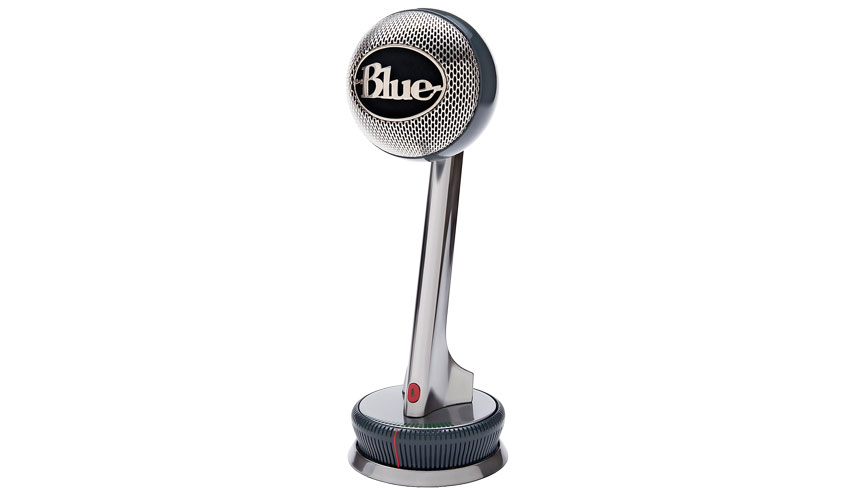MusicRadar Verdict
Keep one next to your computer and never be stuck when an idea strikes.
Pros
- +
Perfect for podcasters and grabbing quick demos. Nice design.
Cons
- -
Not up to more serious recording tasks.
MusicRadar's got your back
The Blue Nessie is a USB mic (with built-in audio interface) that sports a solid round base and an up and down swivelling capsule that can sit on your desktop next to your display. It's a cardioid-pattern condenser with a built-in shockmount and a zero-latency headphone output with volume control.
In Use
"Requiring no drivers to be installed, the Nessie is dead easy to set up and use"
Requiring no drivers to be installed, the Nessie is dead easy to set up and use. There are three selectable recording modes - one captures raw audio, while the other two, designed to make recording easier for novices, apply onboard processing: the vocal setting offers de-essing and adds low-end warmth, while the instrument setting adds a touch more top-end.
We got decent results when recording acoustic guitar, but were aware that the in-built pop shield isn't great for close vocals, necessitating the use of an external pop screen or singing from about 300mm away, which captures maybe too much room ambience.
It's perhaps not the optimum mic of choice for serious multi-track recording, but the Nessie is fine for recording sound in the room, making quick demos and podcasting.
There are many reasons why having a recording mic constantly connected to your computer is a good idea, not least the ability to quickly capture musical ideas - that's the Nessie's strength. It's a practical choice for 'quick and dirty' recording.
Trevor Curwen has played guitar for several decades – he's also mimed it on the UK's Top of the Pops. Much of his working life, though, has been spent behind the mixing desk, during which time he has built up a solid collection of the guitars, amps and pedals needed to cover just about any studio session. He writes pedal reviews for Guitarist and has contributed to Total Guitar, MusicRadar and Future Music among others.
“A synthesizer that is both easy to use and fun to play whilst maintaining a decent degree of programming depth and flexibility”: PWM Mantis review
“I feel like that song had everything we needed to come back with”: Bring Me The Horizon’s Lee Malia on Shadow Moses, its riff and the secrets behind its tone, and why it was the right anthem at the right time
“I said, ‘Are we sure we can write a song about death?’”: The story of Mike + The Mechanics' classic No.1 The Living Years











